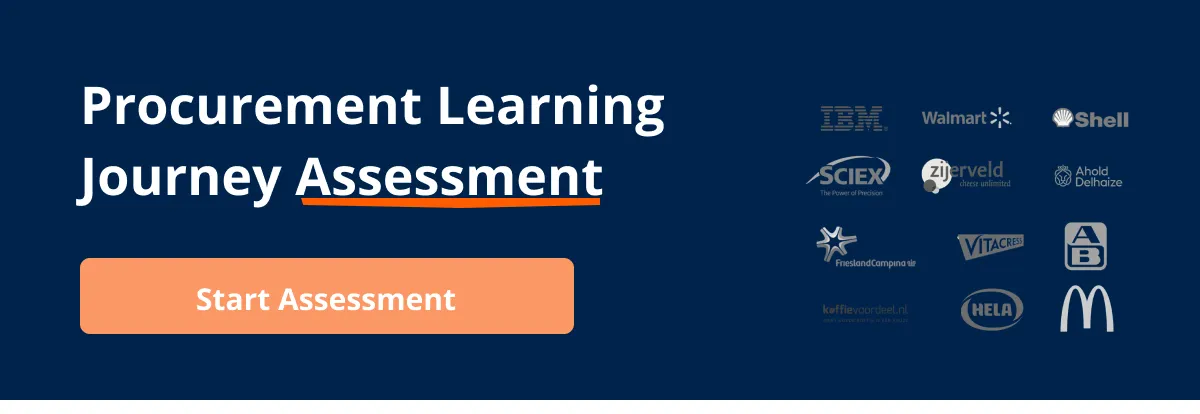Written by Marijn Overvest | Reviewed by Sjoerd Goedhart | Fact Checked by Ruud Emonds | Our editorial policy
Delivery Order — Everything You Should Know
Key takeaways
- Delivery order is a document issued by either the buyer or the seller that authorizes the release of ordered goods and outlines the delivery process.
- Delivery orders function as proof of delivery, ensuring transparency, compliance with contracts, and well-structured procurement procedures.
- Order number, date, supplier/buyer information, deliverables, instructions, and payment terms and conditions are all important details.
When it comes to being a procurement professional or a business manager, the term delivery order is something you might have heard of.
In this article, we will have an in-depth look at what a delivery order is, its uses, processes, how it is created, and its relevance to the procurement process.
After reading this article, you will have a detailed understanding of how to utilize delivery orders and what benefits it can provide for your business by doing so.
What is a Delivery Order?
A delivery order is a document that can be released or issued by either the buyer or the supplier, but in most cases, is usually issued by the supplier. It contains complete information regarding the release of a product as well as its delivery process.
It authorizes the delivery of a purchased product and provides the outline of the delivery process such as who will it be delivered to, how will it be delivered, special specifications of the delivery, and when it’s expected to be released and arrived.
In some cases, where there is a long term and ongoing collaboration between a certain buyer and supplier, delivery orders tend to be issued by the buyers themselves. Why is that?
Since the contractual relationship is for long term, there is no need for separate transactions for each and every order of the product being procured and delivery orders issued by the buyer are just signals for the supplier to have their products delivered in case it’s stated in the contract that multiple orders are expected over a period of time.
This streamlines the procurement process by having the delivery orders issued against the existing contract, avoiding uneccessary new contracts.
Why is It Important?
Just like any other documents used in the procurement process, a delivery order has its fair share of relevance to the process.
Delivery orders serve as a crucial piece of a document when it comes to ensuring that the procurement process is well documented.
It can be used as proof of delivery and allows for transparency when it comes to the details of a transaction.
It helps both parties stay organized, be aligned with the agreement between them, and be aware of their respective responsibilities throughout the procurement process.
Essential Information in a Delivery Order
To ensure that a delivery order is made properly and effectively, essential details must be contained within it. A delivery order shall include essential information such as:
1. Order Number
A code or an identifier for the order. Serves a tracking and reference purpose.
2. Date of the Order
The date of issuance of the delivery order.
3. Supplier Information
The name, address, and contact details of the supplier of the goods or services.
4. Buyer/Customer Information
The name, address, and contact details of the buyer of the goods or services.
5. Deliverables
A detailed list of the goods to be delivered along with the specifications such as the description, quality, quantity, and price.
6. Delivery Instructions
Any specific instructions for the delivery to be conducted. Typically the date, time, and location.
7. Mode of Payment
The agreed terms of payment between the buyer and the supplier.
8. Terms and Conditions
Any other terms and conditions relating to the delivery such as warranties and return policies.
Delivery Orders vs. Other Procurement Documents
The delivery order is often used in conjunction with other documents used in procurement such as the purchase order and job order. Although all of it serves as a document that ensures transparency by having a well-documented procurement process, they are not entirely similar. Here are key differences between them:Software Tools for Managing Delivery Orders
Below are some software tools for managing delivery orders available in the market:1. Coupa
Coupa offers a feature specifically designed for creating and managing job orders. It provides workflows, document management, and reporting functions for procurement needs.
2. Procurify
Procurify is equipped with a variety of tools that optimize procurement tasks. Creating a job order as well as purchase orders is one of them.
It also comes with its own mobile application for iOS and Android devices which makes it very accessible.
3. Tradogram
Tradogram is a top-rated e-procurement software solution that helps businesses manage their procurement process from end to end. It includes supplier management, contract management, and spend analysis.
4. Kissflow
Kissflow is a cloud-based procurement software tool that helps businesses manage their procurement process from requisition to payment. It includes supplier management, contract management, and spending analysis.
5. Whatfix
Whatfix is a cloud-based procurement software tool that helps businesses manage their procurement process from requisition to payment. It includes supplier management, contract management, and spend analysis.
Conclusion
As a procurement professional or business manager, understanding the nuances of delivery orders empowers you to navigate procurement processes with enhanced efficiency and transparency.
By delving into the complexity outlined in this article, you’ve gained insight into the fundamental components that constitute a delivery order and its vital role in documenting procurement transactions.
A delivery order, whether initiated by the buyer or more commonly by the supplier, serves as a pivotal document that authorizes the release and delivery of products. This document encapsulates crucial details, including delivery specifications, timelines, recipient information, and more.
Beyond its role as a proof of delivery, a delivery order facilitates transparency, accountability, and smooth coordination between parties involved in the procurement process.
The importance of delivery orders lies in their ability to streamline processes, ensure adherence to agreements, and provide a structured framework for both buyers and suppliers to uphold their responsibilities.
In cases of long-term collaborations, buyers may take the lead in issuing delivery orders and consolidating multiple orders under a single contract to simplify procurement procedures.
Frequentlyasked questions
What is a delivery order?
A delivery order is a document that can be released or issued by either the buyer or the supplier and contains complete information regarding the release of a product as well as its delivery process.
Why is it important?
Delivery orders serve as a crucial piece of document when it comes to ensuring that the procurement process is well documented. It can be used as a proof of delivery and allows for transparency when it comes to the details of a transaction.
How it differs from other documents?
Unlike the Purchase order and Job Order, Delivery order solely focuses on the authorization and details of release and delivery of the goods or items purchased by businesses. Purchase order typically starts the buying process while Delivery order is when the items are bought and waiting to be delivered.
About the author
My name is Marijn Overvest, I’m the founder of Procurement Tactics. I have a deep passion for procurement, and I’ve upskilled over 200 procurement teams from all over the world. When I’m not working, I love running and cycling.


